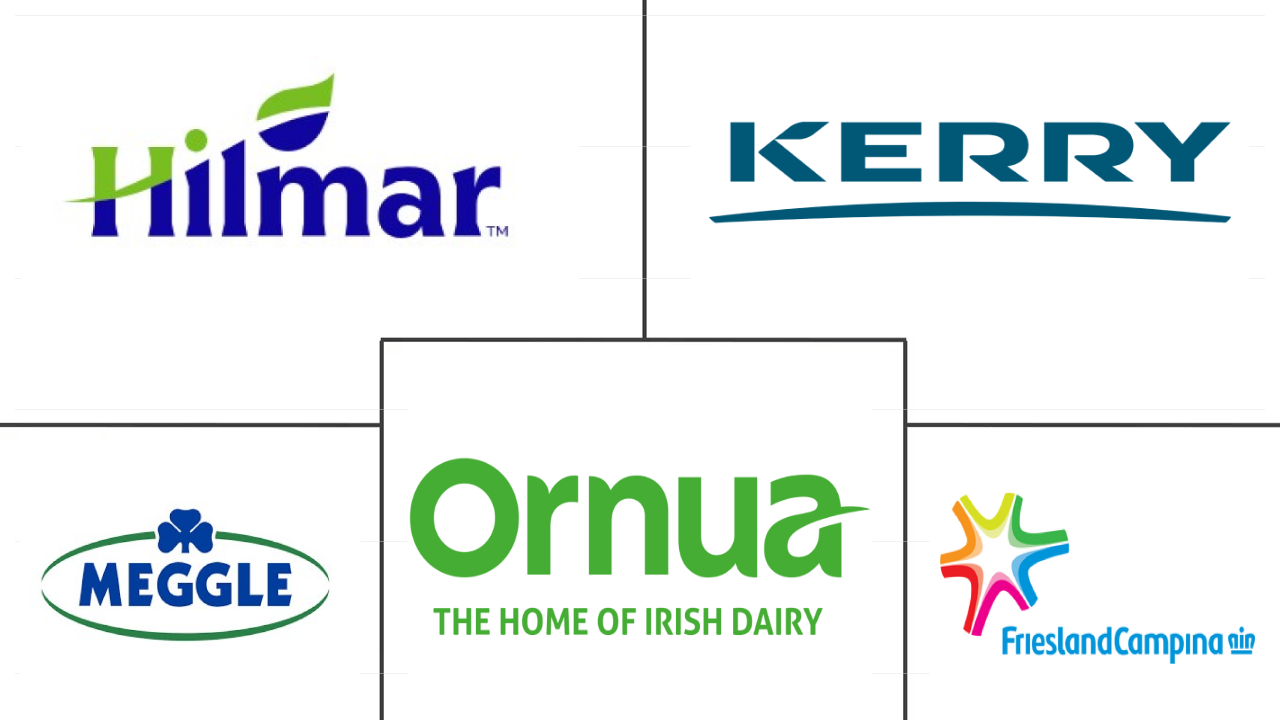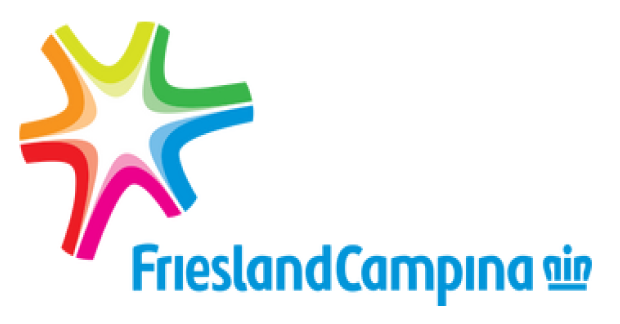Market Size of middle east animal protein Industry
| Icons | Lable | Value |
|---|---|---|
|
|
Study Period | 2017 - 2029 |
|
|
Market Size (2024) | USD 580 Million |
|
|
Market Size (2029) | USD 782.1 Million |
|
|
Largest Share by End User | Food and Beverages |
|
|
CAGR (2024 - 2029) | 6.16 % |
|
|
Largest Share by Country | Saudi Arabia |
|
|
Market Concentration | Low |
Major Players |
||

|
||
|
*Disclaimer: Major Players sorted in no particular order |
Middle East Animal Protein Market Analysis
The Middle East Animal Protein Market size is estimated at 580 million USD in 2024, and is expected to reach 782.1 million USD by 2029, growing at a CAGR of 6.16% during the forecast period (2024-2029).
580 Million
Market Size in 2024 (USD)
782.1 Million
Market Size in 2029 (USD)
4.33 %
CAGR (2017-2023)
6.16 %
CAGR (2024-2029)
Largest Market by Product Type
27.66 %
value share, Milk Protein, 2023

In the Middle East, the supplements industry is the largest contributor to the growth of milk protein as it is considered optimal for pre-workout routines and muscle recovery.
Largest Market by End User
73 %
value share, Food and Beverages, 2023
Casein and caseinates, gelatin, and collagen are the key animal protein used in the food and beverage industry due to consumer inclination toward healthy protein-based food and drinks.
Fastest Growing Market by Product Type
6.67 %
Projected CAGR, Milk Protein, 2024-2029

Milk protein is the fastest-growing segment, primarily driven by rising applications in the food and beverage segment due to constant product developments in business and consumer verticals.
Fastest Growing Market by End User
7.50 %
Projected CAGR, Personal Care and Cosmetics, 2024-2029
Growing demand for natural ingredients and protein-enriched skin, body, and hair care products is further driving the segment, which is projected with the fastest growth rate.
Leading Market Player
6.76 %
market share, Royal FrieslandCampina NV, 2021

FrieslandCampina gained a competitive edge over other players due to its extensive product portfolio and strategic moves toward innovation.
Dominant demand for protein fortified food and beverages and anticipated revenue from personal care and cosmetic products lead the segmental growth
- The animal protein market is largely driven by the food and beverage sector. Consumers in the region are trying to consider the health factors when consuming every product, thus driving the use of animal proteins such as whey proteins, casein and caseinates, and milk proteins. Food and beverage demand is majorly driven by the bakery segment on a value basis, with a share of 42% in 2022. This segment has immense applications of animal proteins such as casein and caseinates, gelatin, collagen, and other milk and whey proteins. It is majorly dominated by gelatin, with a share of 57.18%, by value, in 2022.
- The supplements segment is also one of the major segments in the market, registering a growth of 6%, by volume, from 2018 to 2022. The segment's growth is primarily due to the rising obesity across the region. For instance, around 70% of men over the age of 15 and 67% of women in the United Arab Emirates were obese in 2021. The sectoral growth is largely driven by the baby food and infant nutrition sub-segment, which is anticipated to register a CAGR of 6.63%, by value, during the forecast period.
- However, the animal protein-enriched personal care and cosmetics segment is projected to witness a CAGR of 7.39%, by value, during the forecast period, owing to the increasing applicability of proteins such as keratin, elastin, and whey protein in the segment. For instance, whey protein is used as a skin-smoothening and hair-conditioning agent. High protein collagen peptide energy and beauty drinks are also gaining immense popularity in the United Arab Emirates, Tunisia, and Algeria, as they are often seen as substitutes for leisure drinks due to their 20% high caffeine content.
Countries like Saudi Arabia, Iran drive the segmental revenue with growing demand for meat alternatives in the region
- Saudi Arabia primarily led the market in 2022. In the country, by protein type, milk protein dominates the market with the highest demand for milk protein-based functional foods and beverages, with a market share of 66.3% by value in 2022. This increased demand was primarily because prices of dairy products (which include dairy ingredients like dairy proteins) in Saudi Arabia rose by 30-50% following the Kingdom's Cabinet decision to remove subsidies on them in 2021, leaving consumers in importing countries like Bahrain paying more for dairy products.
- However, during the forecast period, Iran is projected to witness the highest growth potential for animal proteins, particularly gelatin and collagen, with a CAGR of 8.71%, owing to the rising demand for meat alternatives in the country. For instance, per capita meat consumption in Iran fell by 50% in 2021 to an average of just 2.9 kg a year, leaving immense scope for the consumption of meat alternatives, thus driving the use of animal protein-fortified foods.
- The Rest of the Middle East segment emerged as the largest geographical segment in 2022 after Saudi Arabia, with countries like Qatar expanding dairy output to attain self-sufficiency. The processing sector, notably dairy protein, stands to benefit. As a result, players are gradually purchasing smaller businesses or investing in their manufacturing lines to extend their supply capabilities. In 2019, for example, NZMP promoted its dairy component line by showcasing high-protein solutions to address the diverse needs of the region's enterprises. In 2022, Arla Foods invested USD 63 million to expand its production in Bahrain, the largest sum for the company outside Europe.
Middle East Animal Protein Industry Segmentation
Casein and Caseinates, Collagen, Egg Protein, Gelatin, Insect Protein, Milk Protein, Whey Protein are covered as segments by Protein Type. Animal Feed, Food and Beverages, Personal Care and Cosmetics, Supplements are covered as segments by End User. Iran, Saudi Arabia, United Arab Emirates are covered as segments by Country.
- The animal protein market is largely driven by the food and beverage sector. Consumers in the region are trying to consider the health factors when consuming every product, thus driving the use of animal proteins such as whey proteins, casein and caseinates, and milk proteins. Food and beverage demand is majorly driven by the bakery segment on a value basis, with a share of 42% in 2022. This segment has immense applications of animal proteins such as casein and caseinates, gelatin, collagen, and other milk and whey proteins. It is majorly dominated by gelatin, with a share of 57.18%, by value, in 2022.
- The supplements segment is also one of the major segments in the market, registering a growth of 6%, by volume, from 2018 to 2022. The segment's growth is primarily due to the rising obesity across the region. For instance, around 70% of men over the age of 15 and 67% of women in the United Arab Emirates were obese in 2021. The sectoral growth is largely driven by the baby food and infant nutrition sub-segment, which is anticipated to register a CAGR of 6.63%, by value, during the forecast period.
- However, the animal protein-enriched personal care and cosmetics segment is projected to witness a CAGR of 7.39%, by value, during the forecast period, owing to the increasing applicability of proteins such as keratin, elastin, and whey protein in the segment. For instance, whey protein is used as a skin-smoothening and hair-conditioning agent. High protein collagen peptide energy and beauty drinks are also gaining immense popularity in the United Arab Emirates, Tunisia, and Algeria, as they are often seen as substitutes for leisure drinks due to their 20% high caffeine content.
| Protein Type | |
| Casein and Caseinates | |
| Collagen | |
| Egg Protein | |
| Gelatin | |
| Insect Protein | |
| Milk Protein | |
| Whey Protein | |
| Other Animal Protein |
| End User | ||||||||||||
| Animal Feed | ||||||||||||
| ||||||||||||
| Personal Care and Cosmetics | ||||||||||||
|
| Country | |
| Iran | |
| Saudi Arabia | |
| United Arab Emirates | |
| Rest of Middle East |
Middle East Animal Protein Market Size Summary
The Middle East animal protein market is experiencing significant growth, driven primarily by the food and beverage sector's increasing demand for health-conscious products. This demand is particularly evident in the bakery segment, which utilizes a variety of animal proteins such as casein, gelatin, and collagen. The market is also seeing a rise in the supplements segment, fueled by the region's growing obesity rates and the need for nutritional products. Baby food and infant nutrition are key sub-segments, with a strong growth trajectory anticipated. Additionally, the personal care and cosmetics industry is expanding its use of animal proteins like keratin and elastin, further contributing to market growth. The popularity of high-protein collagen peptide drinks is on the rise, especially in countries like the United Arab Emirates, Tunisia, and Algeria, where they are increasingly seen as alternatives to traditional leisure drinks.
Saudi Arabia leads the market, with a significant demand for milk protein-based products, while Iran is expected to witness the highest growth potential due to rising interest in meat alternatives. The Rest of the Middle East segment is also expanding, with countries like Qatar focusing on increasing dairy production. The market is characterized by a fragmented landscape, with major players like Hilmar Cheese Company Inc., Kerry Group PLC, and Royal FrieslandCampina NV holding a modest share. Investments in production facilities and partnerships for organic and specialized protein products are shaping the market dynamics. Despite challenges such as harsh climatic conditions and the need for improved cold chain technology, the market continues to grow, supported by advancements in dairy farming and increased live animal exports from regions like Europe and Australia.
Middle East Animal Protein Market Size - Table of Contents
-
1. MARKET SEGMENTATION (includes market size in Value in USD and Volume, Forecasts up to 2029 and analysis of growth prospects)
-
1.1 Protein Type
-
1.1.1 Casein and Caseinates
-
1.1.2 Collagen
-
1.1.3 Egg Protein
-
1.1.4 Gelatin
-
1.1.5 Insect Protein
-
1.1.6 Milk Protein
-
1.1.7 Whey Protein
-
1.1.8 Other Animal Protein
-
-
1.2 End User
-
1.2.1 Animal Feed
-
1.2.2 Food and Beverages
-
1.2.2.1 By Sub End User
-
1.2.2.1.1 Bakery
-
1.2.2.1.2 Beverages
-
1.2.2.1.3 Breakfast Cereals
-
1.2.2.1.4 Condiments/Sauces
-
1.2.2.1.5 Confectionery
-
1.2.2.1.6 Dairy and Dairy Alternative Products
-
1.2.2.1.7 RTE/RTC Food Products
-
1.2.2.1.8 Snacks
-
-
-
1.2.3 Personal Care and Cosmetics
-
1.2.4 Supplements
-
1.2.4.1 By Sub End User
-
1.2.4.1.1 Baby Food and Infant Formula
-
1.2.4.1.2 Elderly Nutrition and Medical Nutrition
-
1.2.4.1.3 Sport/Performance Nutrition
-
-
-
-
1.3 Country
-
1.3.1 Iran
-
1.3.2 Saudi Arabia
-
1.3.3 United Arab Emirates
-
1.3.4 Rest of Middle East
-
-
Middle East Animal Protein Market Size FAQs
How big is the Middle East Animal Protein Market?
The Middle East Animal Protein Market size is expected to reach USD 580.00 million in 2024 and grow at a CAGR of 6.16% to reach USD 782.06 million by 2029.
What is the current Middle East Animal Protein Market size?
In 2024, the Middle East Animal Protein Market size is expected to reach USD 580.00 million.

